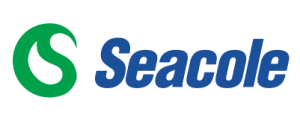
When cleaning and brightening copper alloys, the slightest adjustment in process or chemistries can create vastly different results. A simple switch of a mineral acid wash for an organic one can cut down on rinse cycles, improve process safety for workers, and eliminate the need to outsource waste treatment.
Challenges of Using a Mineral Acid Wash
Using a mineral acid wash to clean and brighten copper presents multiple challenges.
Mineral Acids Can Go Too Far
Mineral acid washes are very potent and offer little room for error. This can result in over-etching or the need to reprocess parts, leading to increased time and cost.
Mineral Acids Are Hazardous
Chelators and phosphates are hazardous chemicals that pollute wastewater and require offsite treatment. They are also unstable and emit harmful fumes that can harm workers.
Mineral Acids Require Multiple Rinses
Mineral acid washes require multiple rinse steps, adding time to the cleaning and brightening process and increasing the opportunity for errors and contamination.
Methane Sulfonic Acid: A Safer, Simpler Solution
Just as effective as mineral acid washes, organic acid washes are excellent deoxidation agents that are more forgiving to apply and safer to handle than their mineral acid counterparts. This not only cuts down on the time and cost of processing, it keeps workers safe from contact with hazardous chemicals.
Seacole partners with Hubbard-Hall to offer a methane sulfonic acid wash that can handle the toughest copper cleaning applications in a single step. The product is odorless, easy to handle, and biodegradable. It requires no chelators or phosphates, empowering surface finishers to treat wastewater in-house. A recent case study found that manufacturers could save up to $90,000 a year in waste disposal along by switching to a methane sulfonic acid wash.
Copper cleaning and brightening does not need to by complicated. Contact Seacole today to discover how changing chemistries could improve results, reduce costs, and create a safer work environment.


